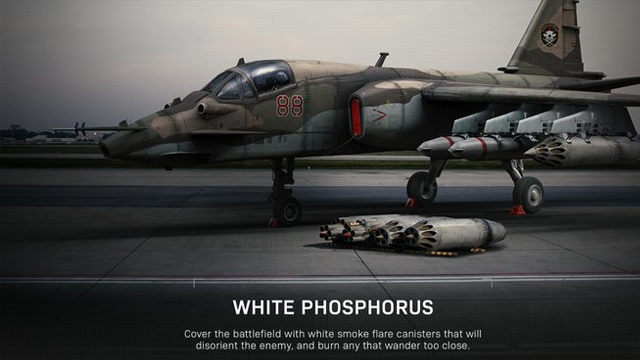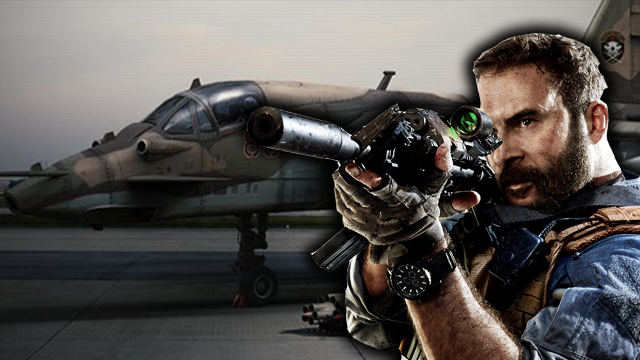Comment is a series in which a member of the GR team discusses their thoughts on a recent hot topic. Share your own take in the comments section below.
Call of Duty: Modern Warfare will see the return of Killstreaks, a long-missed feature in the CoD series which reward players with a potentially game-altering ability if they rack up a certain number of kills. Killstreaks were previously swapped out for Scorestreaks, which were similar but rewarded players for achievements outside of kills, too.
Activision announced the return of Killstreaks in Modern Warfare by way of revealing three that players will be able to get their hands on later this year. Firstly, there’s Juggernaut, a call-in care package that brings some heavy assault armor onto the battlefield. Secondly, there’s an Infantry Assault Vehicle, which is basically a small tank with a machine gun mounted on top. Lastly, there’s white phosphorus, which covers the battlefield with “white smoke flare canisters that will disorient the enemy, and burn any that wander too close.”
That last Modern Warfare Killstreak has led to more than a few raised eyebrows, with white phosphorus being a controversial material with several reports citing illegal usage of it against civilians. Despite having been utilized as a smokescreen, white phosphorus can badly burn those in its vicinity, even causing death. It’s still utilized in modern conflict, though it is regulated by international humanitarian law.
A thread from Twitter user @AliceAvizandum has compiled a bunch of information pertaining to the use of white phosphorus, including an excerpt from a 2009 NBC News story about an 8-year-old who was burned in a white phosphorus attack:
‘8-year-old girl […] injured when a white phosphorus shell ripped through her home […] When she reached the operating room, white powder covered her skin, the oxygen mask on her face started to melt, and flames appeared when doctors attempted to scrape away the dead tissue’ https://t.co/9VJEFk9K76
— November (@postoctobrist) July 30, 2019
With the context of these stories, it’s clear that the use of white phosphorus as a Killstreak reward is a controversial choice by developer Infinity Ward. However, if we are to spotlight the moral implications of weaponry being featured in video games that have also been used in horrific ways in actual conflict, the war game genre as we know it basically wouldn’t exist.
Call of Duty‘s most notable Killstreak was previously a nuclear bomb, which wiped out all players on the map. As a weapon of war, the nuclear bomb has objectively been more catastrophic than white phosphorus, with the World War 2 bombings of Hiroshima and Nagasaki killing over 100,000 people.
Even outside of Killstreaks, some of the basic weaponry used in these games are outright banned by the Geneva Convention. Incendiary weapons such as flamethrowers, Molotovs, mines, bombs, and more are prohibited for use against civilians and combatants under Protocol III to the Convention on Prohibitions or Restrictions on the Use of Certain Conventional Weapons.
Additionally, Protocol II of the same treaty prohibits non-detectable anti-personnel mines, along with non-self-destructing and non-self-deactivating mines outside of areas that are fenced, monitored, and appropriately marked. These restrictions are to prevent the unnecessary suffering which these weapons can cause.

Yet it’s the white phosphorus that has courted controversy. So what gives? Comparisons have been drawn to 2012’s Spec Ops: The Line, which used white phosphorus to illustrate the horrors of war. In Yager’s underrated anti-military shooter, the player launches a white phosphorus attack they believe is restricted to enemy forces, only to learn that they’ve also killed civilians. This realization sees protagonist Captain Walker focusing on a mother gripping her child, both burned to the bone as a result of the phosphorus.
It’s a harrowing scene, but the military shooter genre is filled with weapons that have caused mass devastation in reality, and scenes that would not fly under the rules laid out by the Geneva Conventions. That’s not to say that specific instances of when such shooters overstep a “line” shouldn’t be highlighted — that was certainly the case with Modern Warfare 2‘s ‘No Russian’ mission — but that the line in this genre is so muddled that it can never escape comparisons with real-world atrocities.
“Realistic” games based on warfare are always going to tread a controversial line. They’re works of fiction utilizing weapons and equipment that have been used in real warfare, so comparisons are always going to be made between how these weapons are used in-game, and how they’ve been used in the real world. That’s without even mentioning games directly based on actual wars, such as Battlefield 5 and Call of Duty: WW2, which walk a tightrope in terms of both serving their audience with enjoyable games and respectfully handling their subject matter. In many cases — such as Battlefield 5 selling a Nazi-esque commander as a microtransaction — they stumble.
But if white phosphorus is where we collectively draw the line, much of the military shooter genre would have to be strongly reevaluated. All military shooters are reliant on the gamification of war, and each one is filled with flamethrowers, anti-personnel rockets, incendiary grenades, and more weaponry that isn’t legal to use offensively in the real world. There may be gruesome examples of it being utilized in combat, but the same can be said of many of the weapons that have become staples of the genre.







